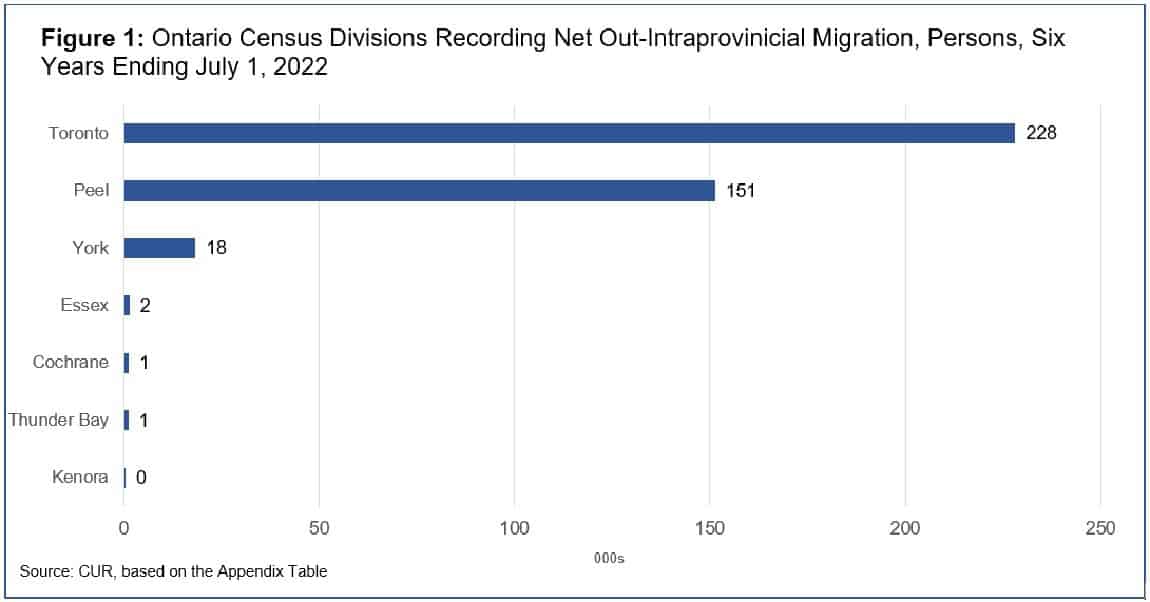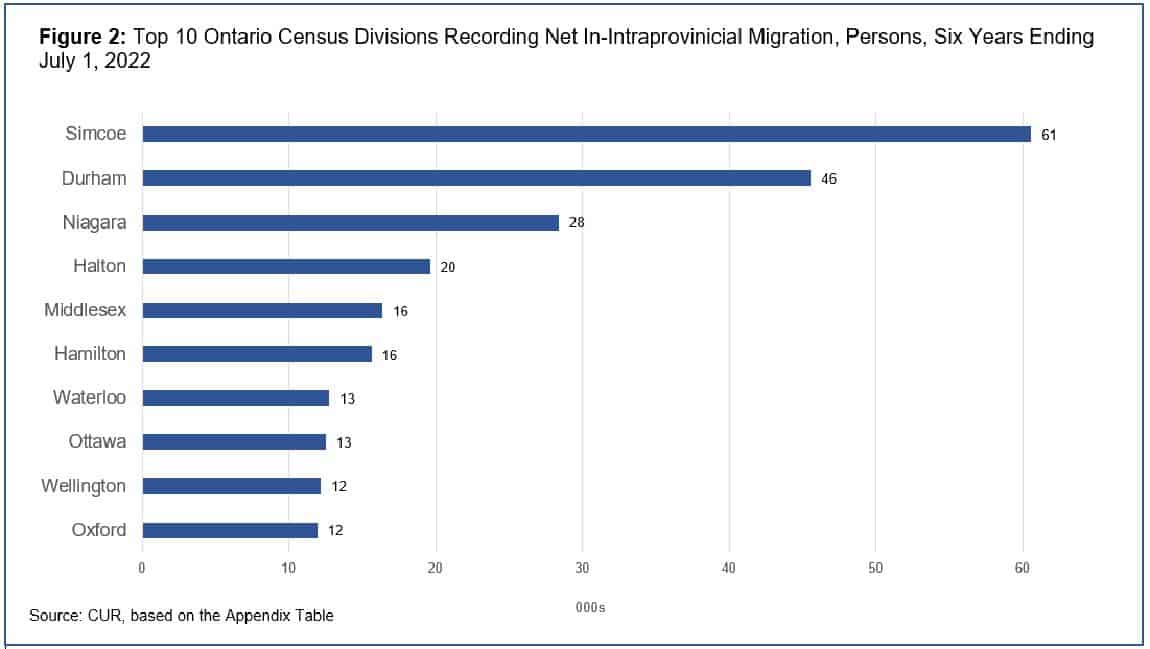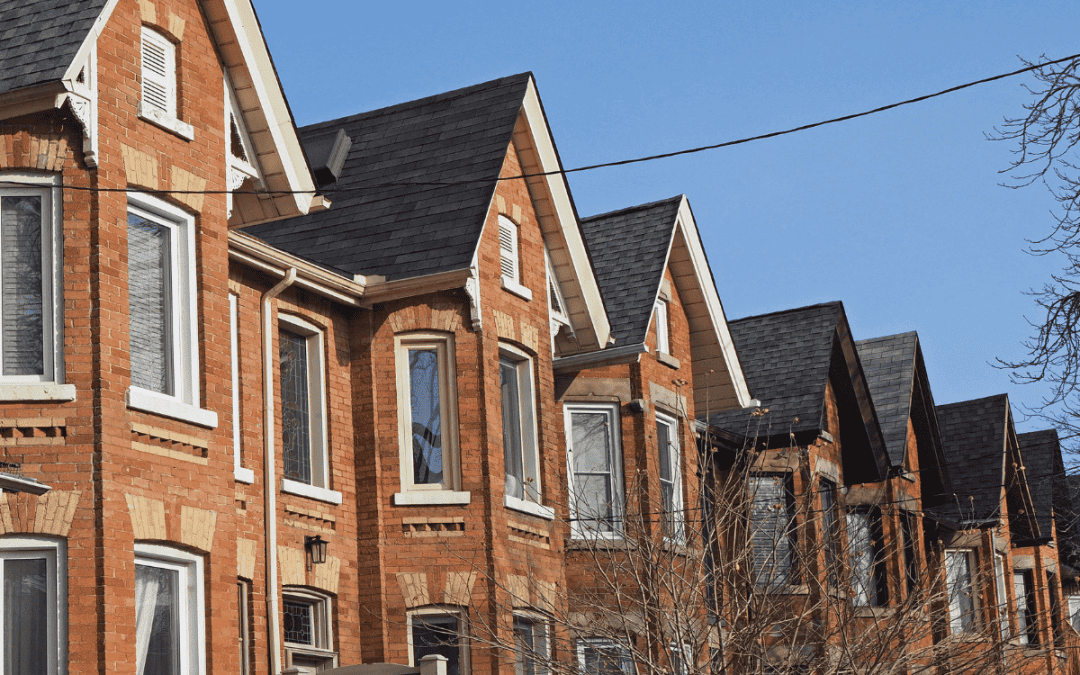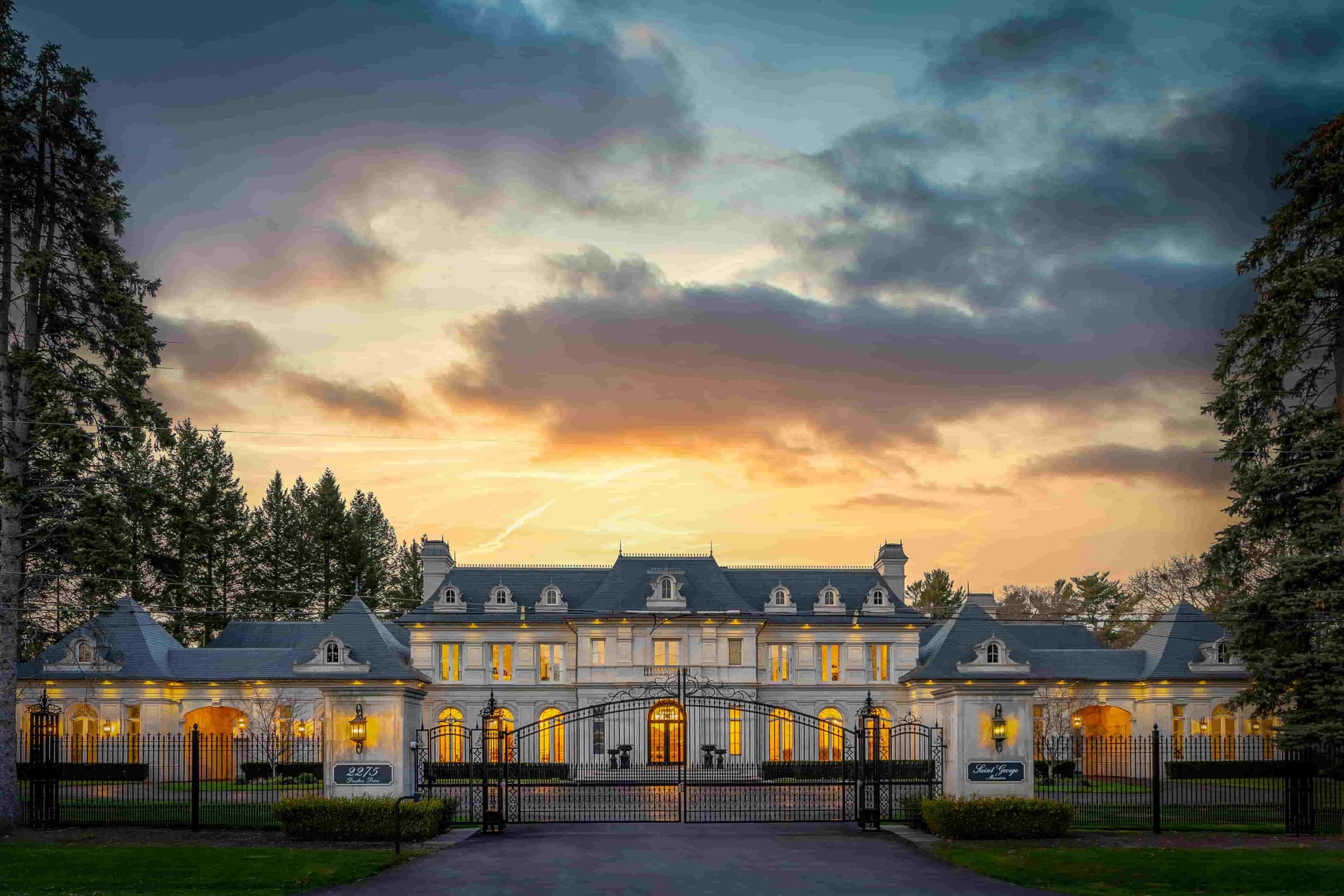The Greater Toronto Area (GTA) is losing residents to other regions in Ontario, with affordability being a major factor in their exodus.
A new report from the Toronto Metropolitan University’s Centre for Urban Research and Land Development (CUR) shows residents are fleeing to the outer Greater Golden Horseshoe (GGH) and other locations within the province.
The report’s authors, Frank Clayton and Nigel Alphonso, note that the lack of affordable single-detached and semi-detached houses and missing middle housing options likely contributed to the GTA’s mounting net outflow of intraprovincial migrants.
Net outflow of residents in Toronto, Peel and York
Statistics Canada figures show that in the 12 months up to Jul. 1, 2022, Toronto, Peel and York recorded a net outflow of 85,615 intraprovincial migrants. Over the past six years, these three municipalities experienced a net outflow of close to 400,000 residents.
Meanwhile, Durham and Halton, the other two Greater Toronto Area regions, recorded net inflows of intraprovincial migrants, but these gains were not significant enough to counter the net outflows in the other three jurisdictions.

Top areas with net in-migrants
While Simcoe and Durham received the most net migrants from other provinces, their net gains of 60,576 and 45,560 residents respectively were not enough to counter the net losses from Toronto and Peel.
The report notes the province’s aspirational housing targets for many GTA and outer GGH municipalities that aim to increase housing production over the next decade significantly.
However, these targets are for total units only and not by type. Thus, CUR expects the new housing will mostly be mid and high-rise apartments rather than the low-density and missing middle housing forms that many households demand.

Worsening affordability of single-detached and semi-detached houses
The GTA’s net outflow of residents to other census divisions in Ontario is due primarily to the unaffordability of single-detached and semi-detached houses in the area.
Demand for these housing types remains high. A recent TRREB survey (conducted by Ipsos) indicates that about 80 per cent of likely GTA homebuyers would prefer a ground-related home, including 55 to 60 per cent for a single-detached or semi-detached house.
According to the report’s authors, the Growth Plan for the Greater Golden Horseshoe of the provincial governments in power between 2003 and 2018 discouraged the construction of single-detached and semi-detached houses in favour of mid and high-rise apartments.
The result is that many families who would otherwise have purchased single-detached or semi-detached houses are opting to move to other census divisions with more affordable options.
What can be done?
While governments can control the amount and type of housing built in specific municipalities, they cannot prevent people from moving elsewhere in search of more affordable housing.
Clayton and Alphonso note the provincial government introduced measures in 2022 to increase housing production in the GTA and adjacent municipalities, including aspirational targets municipalities are to adopt.
However, the targets are again in total units, which may result in more apartments but a shortage of low and medium-density houses, townhouses, stacked townhouses and low-rise apartments.
The report states, “The bottom line is that we anticipate the continued dispersal of the residents of the GTA, particularly those residing in Toronto, York, Peel and Halton, as they search for the type and price of housing they want elsewhere in the GGH and other parts of the province.”

















USA IS SCOOPING UP ALL THE SNOWBIRDS AND EARLY RETIREES
SELL YOUR MILLION DOLLAR HOME IN CANADA AND BUY 20-50 USA HOMES FOR THAT MILLION. LIVE IN FLORIDA OR ARIZONA AND COLLECT USA RENT DOLLAR CHECKS FOR THE REST OF YOUR LIFE. NEVER LIFT A FINGER AGAIN EXCEPT TO SIGN DEPOSIT SLIPS AT THE BANK EVERY MONTH.
Curious. I wonder if anything significant may have happened during that period they may have shifted people’s patterns or ability to work remotely.
Allowing bidding wars to boost prices has effected all parts of Canada. Real estate agents make more, the seller makes more and the buyer is stu k with a huge mortgage fir a house that is now overpriced. Farm land is being scooped up and high priced houses are built for those that sold their Toronto home putting rural homes out of reached for those that live there. The apartment rents have increased in reaction making people pay 80% of their income for a roof over their head. Devopers and landlords are making a killing and the average person can never get ahead.
Incentivized with air quality; water resources; natural heritage resources, such as rivers, lakes, woodlands, and wetlands; and cultural heritage resources; aged friendly developers along the escarpment, rates of illness are higher for the elderly in larger urban areas. Rates of obesity, diabetes and cardiovascular illnesses are much higher in Toronto than Oak Ridge Moraine, Halton, or Niagara considering the industry focused positive impacts and the regional economy housing market. To be clear on the matter, with traffic congestion, noise and light pollution x lack of infrastructure and density, it doesn’t seem odd.